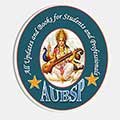Sweden’s education system is structured by age and offers free, high-quality schooling from early childhood through university for EU/EEA citizens. Children start with subsidized preschool from age 1 to 5, followed by a compulsory preschool class at age 6.
From age 7 to 16, students attend compulsory school (Grundskola), after which most continue to upper secondary school (Gymnasieskola) until age 19, choosing between academic or vocational tracks. Higher education is widely accessible, with free tuition for EU/EEA students, and adult education options are available for lifelong learning and skill development.
Navigating the Swedish Educational Landscape: A Lifelong Journey of Learning
Sweden boasts a well-regarded education system, underpinned by the principle of equal opportunity and heavily supported by government funding. This commitment ensures that learning is accessible to all, fostering a society that values knowledge and continuous development. From the earliest years through adulthood, the Swedish educational pathway is structured to nurture individuals and equip them with the skills necessary to thrive. Let’s delve into a detailed, age-wise exploration of this comprehensive system.
1. Preschool (Förskola): Laying the Foundation (Ages 1–5)
The journey begins with förskola, or preschool, a voluntary yet highly popular option for children aged 1 to 5. Far from mere childcare, förskola plays a crucial role in a child’s early development. The emphasis is on creating a stimulating and nurturing environment where social skills blossom through play, interaction, and collaboration. Language development is also a key focus, with educators encouraging communication and vocabulary expansion.
Learning in förskola is largely play-based, recognizing that young children learn best through exploration and engagement. Activities are designed to foster creativity, problem-solving abilities, and a sense of curiosity about the world. While voluntary, förskola is heavily subsidized by the government, making it affordable for families. Parents typically contribute a small fee, the amount of which is usually income-based, ensuring that cost is not a significant barrier to participation. The curriculum is guided by national guidelines that emphasize holistic development, preparing children for their future educational endeavors.
2. Preschool Class (Förskoleklass): The Bridge to Formal Education (Age 6)
A significant step in the Swedish educational journey is förskoleklass, or preschool class. Since 2018, this one-year program has been compulsory for all children turning six. Serving as a crucial bridge between the more informal play-based learning of förskola and the structured environment of compulsory school, förskoleklass aims to ease the transition and ensure all children start Grade 1 with a foundational level of preparedness.
During this year, children engage in more goal-oriented activities that subtly introduce basic literacy and numeracy concepts. Social interaction and the development of self-confidence continue to be important aspects. The curriculum is designed to stimulate curiosity and a positive attitude towards learning. The fact that förskoleklass is now mandatory underscores the Swedish government’s commitment to providing a strong and equitable start to every child’s formal education. Like compulsory school, förskoleklass is provided free of charge.
3. Compulsory School (Grundskola): Nine Years of Fundamental Learning (Ages 7–16, Grades 1–9)
At the age of seven, children enter grundskola, the compulsory nine-year comprehensive school system. This stage forms the bedrock of Swedish education, providing a broad and balanced curriculum for all students, regardless of their background or future aspirations. Education at this level is entirely free.
The curriculum encompasses a wide range of subjects, including the Swedish language, mathematics, sciences (biology, chemistry, physics), social studies (history, geography, civics, religious education), and foreign languages. English is typically introduced as early as Grade 1 or Grade 3, highlighting the importance of multilingualism in Sweden. Other optional foreign languages may also be offered.
Throughout grundskola, emphasis is placed on developing critical thinking skills, problem-solving abilities, and collaborative learning. Teaching methodologies often involve interactive lessons, group projects, and individual support to cater to diverse learning needs. Assessment is continuous, with a focus on providing feedback to support student progress. At the end of Grade 9, students receive grades that determine their eligibility for upper secondary school.
4. Upper Secondary School (Gymnasieskola): Charting Future Paths (Ages 16–19)
Following grundskola, students have the option to continue their education in gymnasieskola, or upper secondary school. While not compulsory, it is strongly encouraged, with a vast majority of students choosing to enroll. This three-year program is also provided free of charge.
Gymnasieskola offers a diverse range of programs, broadly categorized into academic programs (högskoleförberedande program) and vocational programs (yrkesprogram).
Academic Programs: These programs are designed to prepare students for higher education at universities or colleges. They typically have a strong theoretical focus and include subjects such as humanities, social sciences, natural sciences, and economics. Examples include the Natural Science Programme, the Social Science Programme, and the Economics Programme.
Vocational Programs: These programs provide students with specific skills and knowledge for particular careers. They often include practical training and work placements, making graduates well-prepared for direct entry into the workforce. Examples include the Construction and Civil Engineering Programme, the Healthcare and Social Care Programme, and the Vehicle and Transport Programme.
The choice of program in gymnasieskola significantly influences a student’s future educational and career options. Guidance counselors play an important role in helping students make informed decisions based on their interests and abilities. Upon successful completion of gymnasieskola, students receive a diploma that qualifies them for either higher education (for academic programs) or employment (for vocational programs).
5. Higher Education (University / College): Pursuing Specialized Knowledge (Age 19+)
For those aspiring to further their education, Sweden offers a robust higher education system comprising public universities and university colleges (högskolor). These institutions offer a wide array of undergraduate and postgraduate programs across various disciplines.
A significant aspect of Swedish higher education is the tuition policy. Currently, education is free for citizens of EU/EEA countries and Switzerland. However, students from outside these regions are required to pay tuition fees. The amount of these fees varies depending on the program and the institution.
To support students in financing their studies, a comprehensive system of financial aid is available through the Swedish National Board of Student Aid (CSN). This includes both student loans, which are typically repaid after graduation, and grants, which do not need to be repaid. Eligibility for financial aid depends on factors such as citizenship and study intensity.
Swedish universities and university colleges are known for their high academic standards, research-intensive environments, and focus on innovation. They attract students from around the globe, creating a diverse and stimulating learning environment.
6. Adult Education (Komvux & Folk High Schools): Lifelong Learning Opportunities (Age 20+)
Recognizing the importance of lifelong learning, Sweden provides extensive opportunities for adult education through municipal adult education (Komvux) and folk high schools (folkhögskolor). These voluntary options cater to individuals aged 20 and above with diverse educational needs and goals.
Komvux: Offers courses at the upper secondary level, allowing adults to complete their basic education, obtain qualifications equivalent to gymnasieskola, or retrain for new careers. It also provides Swedish for Immigrants (SFI) courses, which are crucial for the integration of newcomers into Swedish society.
Folk High Schools: These unique residential colleges offer a wide range of courses, often with a focus on personal development, cultural enrichment, and civic engagement. They provide a less formal learning environment and often attract individuals seeking a different educational experience or a pathway to further studies.
Both Komvux and folk high schools play a vital role in ensuring that individuals have access to learning opportunities throughout their lives, promoting social inclusion and economic mobility. Fees for these programs can vary, but they are often subsidized to make them accessible.
In conclusion, the Swedish education system is a testament to the nation’s commitment to fostering an educated and engaged populace. From the nurturing environment of förskola to the specialized knowledge gained in higher education and the continuous learning opportunities offered in adult education, Sweden provides a comprehensive and inclusive pathway for lifelong learning and development. The emphasis on equal access, government funding, and a well-structured curriculum ensures that individuals are equipped with the skills and knowledge necessary to navigate and contribute to a dynamic society.
FAQs on Age-wise Education System in Sweden
At what age does education start in Sweden?
Children can begin preschool (förskola) as early as 1 year old, though it’s voluntary.
Is preschool in Sweden free?
Preschool is heavily subsidized by the government, but parents pay a small income-based fee.
What is preschool class (förskoleklass) in Sweden?
It’s a mandatory one-year class for 6-year-olds that prepares children for primary school.
When does compulsory school start and end in Sweden?
Compulsory school starts at age 7 and ends at age 16, covering Grades 1 through 9.
Is education free in Sweden?
Yes, education is free at all levels for Swedish and EU/EEA citizens, including university.
When do students start learning English in Sweden?
Students usually start learning English between Grade 1 and Grade 3, depending on the school.
Is upper secondary school (gymnasieskola) mandatory in Sweden?
No, it is not mandatory, but most students choose to attend from ages 16 to 19.
What are the types of programs offered in gymnasieskola?
There are academic programs for university preparation and vocational programs for specific careers.
Can students switch between academic and vocational tracks?
Yes, with the right support and planning, transitions between tracks are possible.
Is higher education in Sweden really free?
Yes, for EU/EEA citizens; international students from outside the EU/EEA pay tuition fees.
How long are university degree programs in Sweden?
Bachelor’s degrees typically take 3 years, and master’s degrees 1 to 2 years.
What is Komvux in Sweden?
Komvux is municipal adult education that allows adults to complete or improve their education.
What are folk high schools (folkhögskolor)?
These are alternative adult education institutions that focus on personal development and civic engagement.
Is there education for immigrants in Sweden?
Yes, immigrants can attend Swedish for Immigrants (SFI) courses to learn the language and integrate.
Are there private schools in Sweden?
Yes, but they are publicly funded and follow the national curriculum; tuition is not allowed.
Do students receive financial aid in Sweden?
Yes, Swedish students can receive government grants and student loans for higher education.
What is the grading system in Swedish schools?
Grades range from A (excellent) to F (fail) in upper secondary school and higher education.
Do students take national exams in Sweden?
Yes, national tests are given in key subjects like Swedish, English, and math at several grade levels.
Are school meals provided in Sweden?
Yes, all students in compulsory and upper secondary schools receive free school lunches.
Is homeschooling allowed in Sweden?
It is generally not allowed except in very rare, exceptional circumstances.
Are there international schools in Sweden?
Yes, especially in larger cities, offering international curricula in English or other languages.
How is special education handled in Sweden?
Inclusive education is emphasized, with support available within mainstream schools when possible.
Do Swedish schools offer extracurricular activities?
Yes, many schools offer activities such as sports, music, and clubs.
What role do municipalities play in education?
Municipalities are responsible for running most preschools, compulsory schools, and Komvux programs.
What language is education conducted in?
Most instruction is in Swedish, but English is widely taught and some programs are offered in English.



Leave a Reply
You must be logged in to post a comment.